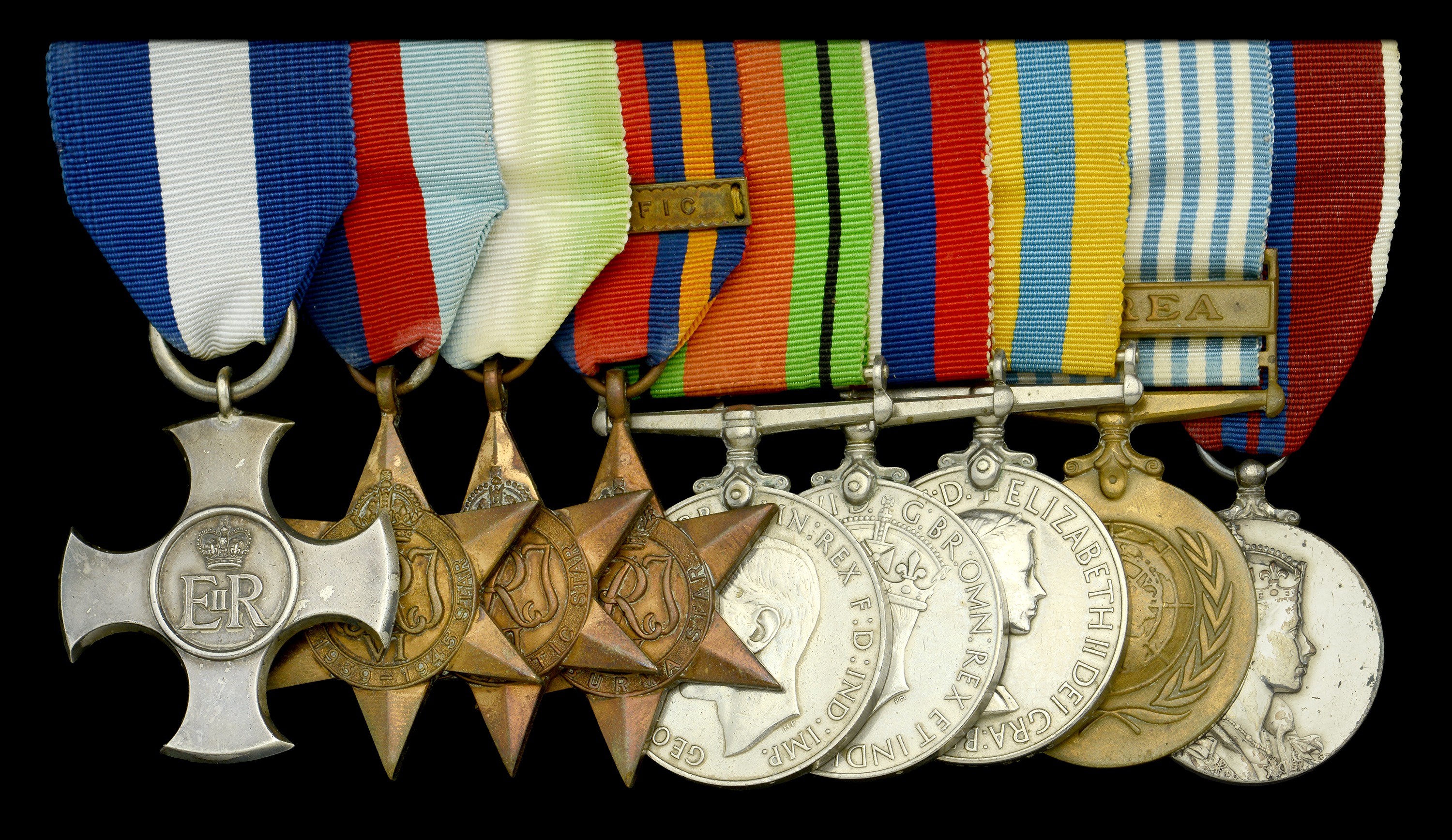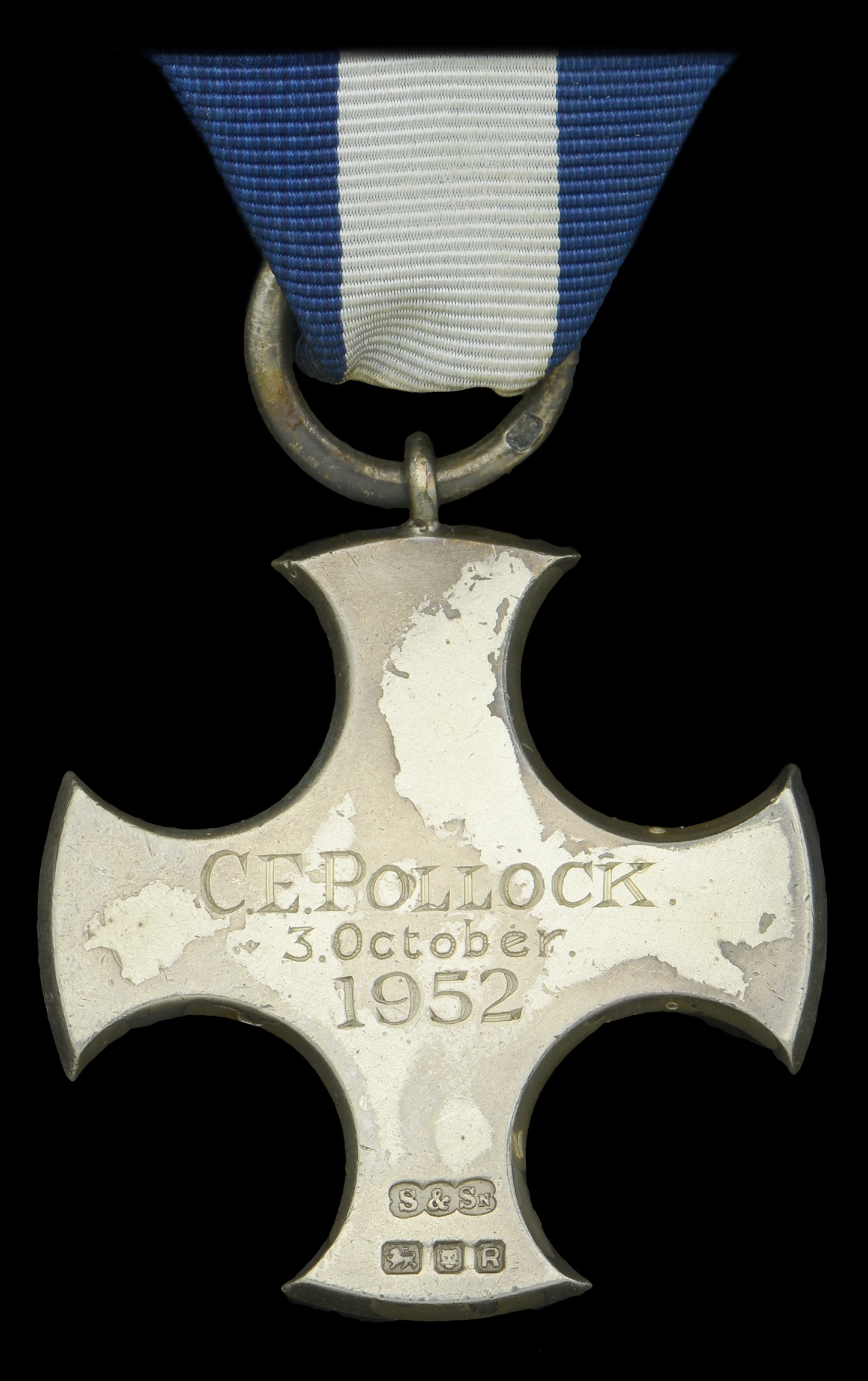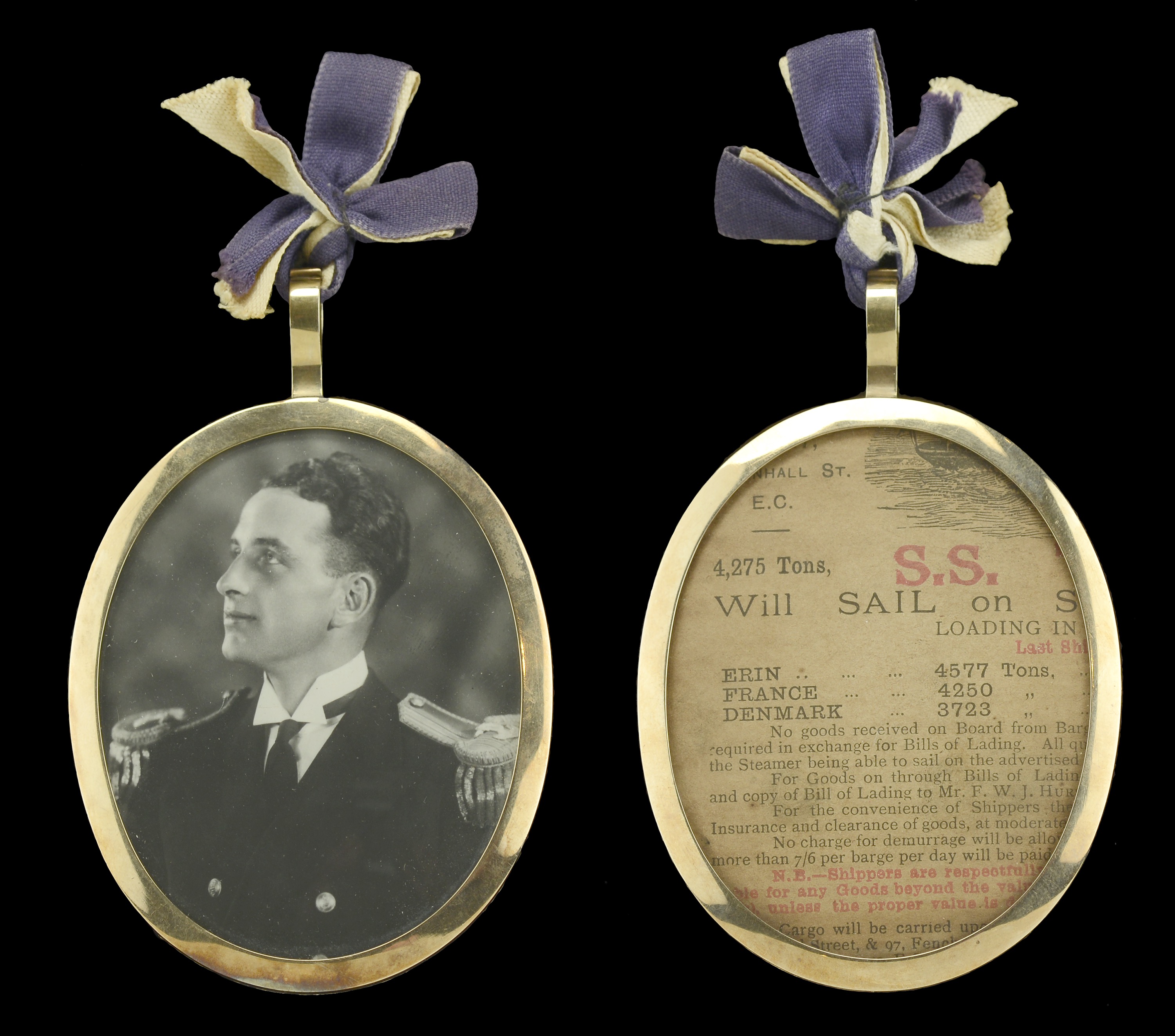The Korean War D.S.C. group of nine awarded to Commander C. E. Pollock, Royal Navy, who commanded the destroyer H.M.S. Comus during the conflict Distinguished Service Cross, E.II.R., a rare Spink & Son issue, the reverse officially inscribed ‘C. E. Pollock. 3 October. 1952’ and hallmarked London 1952; 1939-45 Star; Atlantic Star; Burma Star, 1 clasp, Pacific; Defence and War Medals 1939-45; Korea 1950-53 (Cdr. C. E. Pollock. D.S.C. R.N.); U.N. Korea 1950-54; Coronation 1953, mounted as worn, very fine or better (9) £5,000-£6,000 --- Importation Duty This lot is subject to importation duty of 5% on the hammer price unless exported outside the UK --- --- Just 69 awards of the D.S.C. for the Korean War, in addition to 14 First Bars and five Second Bars. D.S.C. London Gazette 3 October 1952: ‘For distinguished service in operations in Korean waters.’ Charles Edward Pollock was born in Darlington, Co. Durham on 14 May 1910, and was originally commissioned as a probationary Sub Lieutenant in the Royal Naval Reserve in August 1935 but transferred to the Royal Navy as an acting Sub Lieutenant in October 1939. He subsequently witnessed extensive action in the Second World War, not least as Torpedo Lieutenant aboard the destroyer H.M.S. Somali in the period February 1941 to May 1942, commencing with her supporting role in Operation ‘Claymore’, the Commando raid on the Lofoten Islands in early March 1941. It was during these operations that Somali intercepted the trawler Krebs off Svolvaer and her boarding party discovered some rotor disks from an Enigma coding machine, together with some associated documents, all of which were found to be invaluable at Bletchley Park. This success led to a separate operation to intercept the German weather ship Munchen in early May 1941, from which further valuable documentation was obtained. Having then taken part in the search for the Bismarck at the end of the same month, Somali transferred to the Arctic run in August 1941, and over the coming months participated in several ‘QP’ operations. Promoted Lieutenant-Commander in May 1942, Pollock came ashore to an appointment Vernon, but he returned to sea in the carrier Victorious in January 1944, shortly before her part in Operation ‘Tungsten’, the Fleet Air Arm attack on the Tirpitz in her Norwegian lair. In June 1944, however, Victorious sailed for the warmer climes of the Far East, where she was to remain on station for the remainder of the war. She was subsequently heavily engaged off Sabang, Palembang and Okinawa, and was attacked by kamikaze aircraft on two occasions in the latter operations, suffering a loss of three killed and 19 wounded. Pollock also no doubt shared in the ship’s V.J. Day celebrations in Sydney on 31 August 1945. Having been advanced to Commander in April 1947, he was appointed to the command of the destroyer Comus in May 1951. Thus ensued a busy tour of operations in Korean waters, where she served as one of several destroyers used as escorts to the air groups or for coastal bombardments. Official records reveal that Pollock was recommended for the American Legion of Merit, Degree of Legionnaire, the proposed citation stating: ‘For meritorious service to the United States Navy and to the Government of the United States as the Commanding Officer of HMS Comus during the period July 1951 to January 1952 while serving in the Korean conflict with the United Nations Blockade and Escort Force, Naval Forces Far East. Commander Pollock by his intelligent leadership, aggressiveness, and untiring devotion to duty, both in his harassing attacks on Communist forces and installations, and in his long and arduous Escorting Patrols displayed his outstanding skill as a Naval Officer. He planned and carried out skilfully effective attacks on Communist coastal installations, against enemy counter battery fire. Commander Pollock made a marked contribution to the success of the Naval Campaign in the Korean conflict and his services were in keeping with the best Naval traditions.’ That recommendation was not approved. Instead, he was awarded the D.S.C., which distinction he received at a Buckingham Palace investiture in March 1953. Meanwhile, he was advanced to Captain and appointed to the command of Phoenix, the Royal Navy’s Defence School at Stamshaw, Portsmouth. Then in March 1956, he was appointed Commanding Officer of Osprey, the Royal Navy’s underwater detection establishment, a post he held until being placed on the Retired List in May 1958. He died in Florida, U.S.A. in November 1993. Sold with a portrait photograph contained in an oval-shaped, silver-gilt glazed frame, together with copied research.












